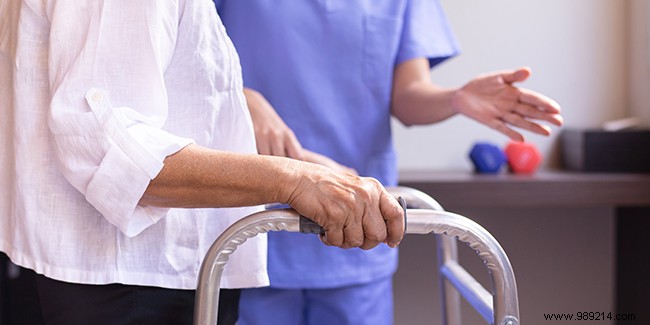
Today in France, nearly a million people suffer from Alzheimer's disease and other related diseases. A constantly changing figure:projections show that in 2030, 1,750,000 people will be affected. In order to best adapt to the care of these patients who are most often very dependent, and who will be more and more numerous in the years to come, accommodation establishments for dependent elderly people (Ehpad) have equipped with Protected Life Units (UVP), structures specially designed to accommodate these elderly patients. The UVP offer them a secure, warm living environment, community life, but also personalized support.
The Protected Life Unit (UVP) designates a specific structure, most often present in an accommodation establishment for dependent elderly people (Ehpad), which aims to accommodate people over the age of 60 suffering from Alzheimer's disease and more generally people with disorders related to this disease.
The Protected Life Unit was previously known as the Center for Natural Activities Drawn from Useful Occupations (Cantou), a structure created in France in the late 1970s to accommodate dependent elderly people with symptoms of dementia. The "Cantou" were rather fully-fledged and autonomous establishments. Today, Protected Living Units are most often integrated into nursing homes, but also sometimes into retirement homes.
The purpose of setting up the "Cantou", now renamed "Protected Life Unit", was originally to create a secure, warm environment, which preserves as much as possible the autonomy of seniors who can no longer stay at home in particular because of their state of disorientation due to their dementia.
This is why a UVP generally accommodates no more than 20 residents with cognitive impairment. In principle, the latter have a single room where a familiar environment is recreated. They are therefore reception structures on a human scale. Seniors also benefit from common areas.
UVPs are also equipped with specific equipment to ensure the safety of their residents, such as lockable windows and doors, furniture and special equipment to prevent falls or accidents, etc.
The specificity of a Protected Living Unit lies in the fact that it offers a living environment totally adapted to people who suffer from cognitive disorders, but also physical ones, linked to Alzheimer's disease or any degenerative disease of this type. . They are, in fact, generally very dependent people who require more resources and qualified personnel for this type of care than the other residents of an nursing home who do not suffer from these disorders.
The UVPs work with multidisciplinary teams made up of nursing assistants, medico-psychological assistants, art therapists, physiotherapists, occupational therapists, psychomotor therapists, etc., in sufficient numbers and specially trained and qualified in the treatment of symptoms of dementia and Alzheimer's disease in particular.
These structures integrated into nursing homes also usually have specific equipment intended to monitor and secure the lives of dependent residents who require care and very special attention compared to other residents of nursing homes.
Workshops around themes related to the symptoms of Alzheimer's disease or dementia, such as eating disorders, states of anxiety, agitation, or loss of self-esteem are also organized at the within UVPs. These events allow the elderly to enjoy activities that (re)give them the pleasure of living, to regain self-confidence, etc.
Within the nursing homes, the UVPs make sure to preserve the autonomy of the people who are welcomed there as much as possible by involving them as much as possible in the tasks of daily life (dishes, washing, peeling vegetables, etc.), such as if they were still at home. Residents benefit from personalized follow-up and support intended to stimulate them daily in order to preserve their autonomy as much as possible.
A Protected Living Unit also gives an important place to the relatives of the elderly people it welcomes, relatives who are often lost and helpless in the face of the symptoms of Alzheimer's disease in particular. Relatives of residents of these structures, apart from nursing homes, are involved in their operation and participate, for example, in monthly meetings during which their opinions, questions, proposals, etc., are taken into account to make the life of their loved ones as pleasant as possible.